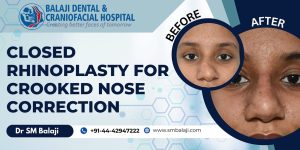Evolution of Facial Fracture Treatment down the ages
We live in the golden age of mankind where wars are minimal and the frontiers of medical science are being expanded on a daily basis. The fields of oral surgery and orthognathic surgery have become highly advanced, both in the form of techniques and the materials used.
Medical treatment was very primitive in the ancient days. Mankind too led far more violent lives and the occurrence of facial fractures was quite common. This left behind debilitating deformities of the face. There was also partial loss of dentition when the fractures involved the bones of the jaws. This led to a great drop in the quality of life of the person. Functional problems directly contributed to a reduction in the lifespan of the individual.
Common sites of occurrence of facial fractures
Common fractures that occurred included orbital fractures, fractures of the sides of the face, nasal fractures and broken bones involving the eye sockets. This led to an asymmetrical face with soft tissue distortion. Facial features became distorted leading to social problems.
The advent of reconstructive surgery and corrective jaw surgery in modern times greatly helped in the treatment of facial fractures. Modern surgical practices utilize titanium screws and plates to correctly align and stabilize the fractured segments in normal anatomical alignment. Implants are used to replace any lost teeth. An implant mimics a tooth root. Artificial teeth are fixed on top of these implants to rehabilitate the patient.
Straightforward implant surgery is a simple procedure and can be performed under local anesthesia. This not only results in improved oral health but also improved general health. Bone grafting is utilized when there is loss of bony support for fixing implants. Care should be taken during the healing process to ensure best long term viability of the implants.
Patient with a history of multiple fractures from a road traffic accident
The patient is a 32-year-old female from Kurnool in Andhra Pradesh, India who had been involved in a horrific road traffic accident around five years ago. This had resulted in panfacial fractures for the patient. She had been admitted at a local hospital for fracture reduction and plate fixation. However, she had never been happy with the outcome of the facial fracture surgery as it had resulted in a facial asymmetry. The fractured segments of her mandible had collapsed inwards and there was also a deficit of 8-10 mm of bone at the fracture site. In fact, this had slowly developed into a depression with her avoiding all social contact. She also had functional jaw problems, which made it difficult for her to eat well.
A family friend from Chennai had visited her in Kurnool and had come to know about her problems. She had then referred the patient to Balaji Dental and Craniofacial Hospital in Chennai. The patient and her husband thus presented to our hospital for surgical correction of her malunited fracture. Our hospital is a renowned center for jaw deformity surgery in India.
Initial examination and treatment planning in our hospital
Dr SM Balaji, facial asymmetry surgeon, examined the patient and ordered radiographic studies. Clinical examination revealed that the patient had partially edentulous maxilla and mandible. The right maxillary and mandibular ridges were not in alignment and were also not suitable for teeth replacement. There was notable facial asymmetry in the lower part of the face. A 3DCT scan revealed malunited mandible. The patient also did not have sufficient bone in the right maxilla for replacement of her missing teeth.
The treatment plan was to refractured the mandible and fix it in proper alignment using plates and screws. The right maxillary alveolar ridge was to be reconstructed using the rib graft.
Surgical correction of the malunited fracture through refractured of the jaw
Under general anesthesia, rib grafts were first harvested from the patient. Following this, a Valsalva maneuver was performed to ensure that there was no perforation into the thoracic cavity. The incision was then closed in layers with sutures. Next, a crevicular incision was placed in mandible and a mucoperiosteal flap was elevated. Dissection was then done down to the previously placed titanium plates and screws, which were then removed. Following this, the mandible was refractured along the midline, checked and separated by about 8-10 mm at the midline. This gap was closed using pieces of rib graft. The segments were then stabilized and fixed in the new position using titanium plates and screws.
A midcrestal incision was next placed in right maxilla and a mucoperiosteal flap was elevated. The previously placed plates and screws removed. The right maxillary alveolar ridge was augmented using rib graft and fixed with screws. Hemostasis was achieved and closure was done using resorbable sutures.
Successful outcome of the surgery
The patient was very happy with the outcome of the surgery. Her facial asymmetry was completely corrected and the right maxillary and mandibular alveolar ridges were in perfect alignment. The patient can undergo dental implant surgery after about 3-4 months following complete bone formation. She expressed her total satisfaction at the outcome of the surgery.





